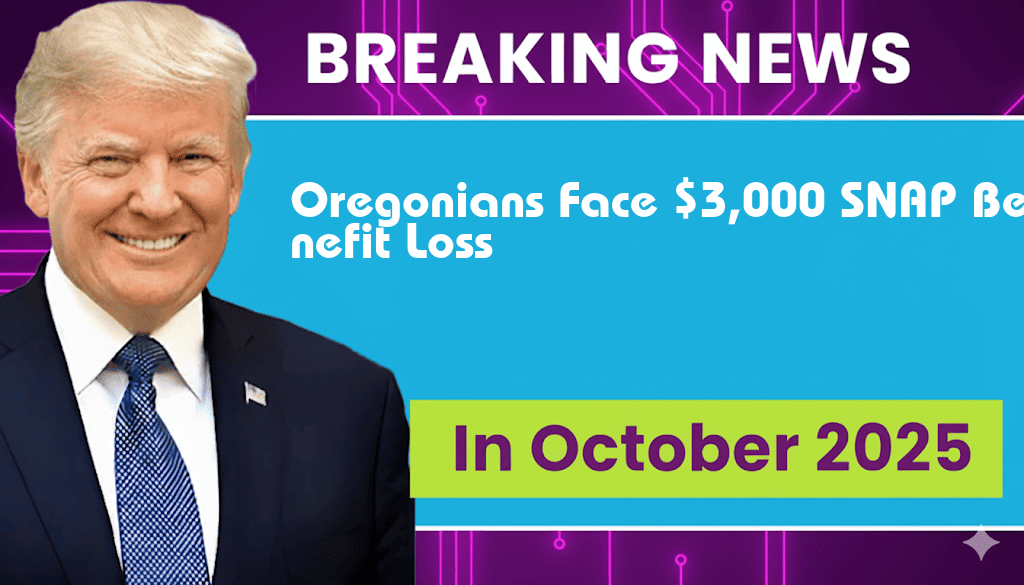3,000 Oregonians Face Over $3,000 Each in Benefit Loss Due to SNAP Eligibility Changes
Recent adjustments to the Supplemental Nutrition Assistance Program (SNAP) eligibility criteria are set to profoundly impact approximately 3,000 residents of Oregon, each potentially losing over $3,000 in annual benefits. This change, announced by the Oregon Department of Human Services, comes as part of a broader effort to recalibrate the assistance program following the pandemic. Many of those affected are low-income families who relied heavily on SNAP to secure essential food supplies. The new eligibility thresholds are raising concerns among community advocates and local officials, who warn that the cuts could exacerbate food insecurity in a state that already grapples with high rates of hunger.
Understanding the Changes
The Oregon Department of Human Services has implemented new eligibility requirements that focus on income calculations and asset limits. Under the revised guidelines, many residents who previously qualified for SNAP will find themselves ineligible. This shift in policy is aimed at aligning Oregon’s SNAP program with federal standards while addressing budgetary constraints. However, critics argue that this approach disproportionately affects vulnerable populations.
- Income Calculation Adjustments: The new rules consider a wider array of income sources, which can push some families above the eligibility threshold.
- Asset Limits: Higher asset limits mean that families with savings or property may no longer qualify, even if their income is low.
- Emergency Allotments Ended: The cessation of emergency allotments, which provided extra benefits during the pandemic, has further strained the resources available to low-income families.
The Impact on Oregon’s Residents
The ramifications of these eligibility changes are expected to be significant. Many families relying on SNAP will now have to navigate their food budgets with fewer resources, potentially facing tough choices between essential needs and daily expenses. For example, a family of four that previously received an average of $600 per month may see their benefits slashed, leading to a substantial deficit in their ability to purchase groceries.
According to local advocacy groups, the loss of these benefits could lead to increased food insecurity across the state. “These cuts come at a time when families are still recovering from the economic fallout of the pandemic,” said Maria Gonzalez, a spokesperson for the Oregon Food Bank. “We are deeply concerned that these changes will push more families into crisis.”
Community Response and Advocacy
The community response has been swift, with various organizations mobilizing to support those at risk of losing benefits. Food banks and local charities are gearing up to meet the anticipated surge in demand for food assistance. Additionally, advocacy groups are calling for legislative action to mitigate the impact of these cuts.
- Food Banks: Organizations are increasing their outreach efforts to ensure that those affected are aware of alternative resources available to them.
- Legislative Advocacy: Advocates are urging state legislators to reconsider the new eligibility criteria and restore access to benefits for those in need.
- Public Awareness Campaigns: Initiatives are underway to inform communities about the changes and how to navigate the new system.
Looking Forward
As the state navigates these changes, the long-term implications for food security in Oregon remain a pressing concern. Local governments and organizations are urged to collaborate to create safety nets for affected families, ensuring that no one is left without access to basic nutrition.
In light of these developments, it becomes crucial for Oregonians to stay informed about their rights and available resources. For further information on SNAP and assistance programs, residents can visit the U.S. Department of Agriculture’s SNAP page or refer to the Oregon Department of Human Services.
Conclusion
The changes to SNAP eligibility in Oregon are poised to affect thousands of families, underscoring the importance of community support and advocacy. With food insecurity being a critical issue in the state, ongoing discussions and actions will be essential to address the needs of those impacted.
Frequently Asked Questions
What are the recent changes to SNAP eligibility in Oregon?
The recent changes to SNAP eligibility in Oregon involve adjustments in income thresholds and guidelines, which have resulted in approximately 3,000 Oregonians facing significant reductions in their benefits.
How much benefit loss can affected Oregonians expect?
Affected individuals can expect to lose over $3,000 each due to the changes in SNAP eligibility criteria.
Who will be impacted by the SNAP eligibility changes?
Approximately 3,000 Oregonians will be impacted, particularly those who were previously receiving benefits but no longer meet the new eligibility requirements.
What should individuals do if they are affected by the benefit loss?
Affected individuals are encouraged to seek assistance through local food banks and social services, and explore alternative programs that may help mitigate the impact of the SNAP benefit loss.
Will these changes affect all SNAP recipients in Oregon?
No, the changes will not affect all SNAP recipients; only those who fall under the new eligibility criteria and income thresholds are at risk of losing their benefits.
